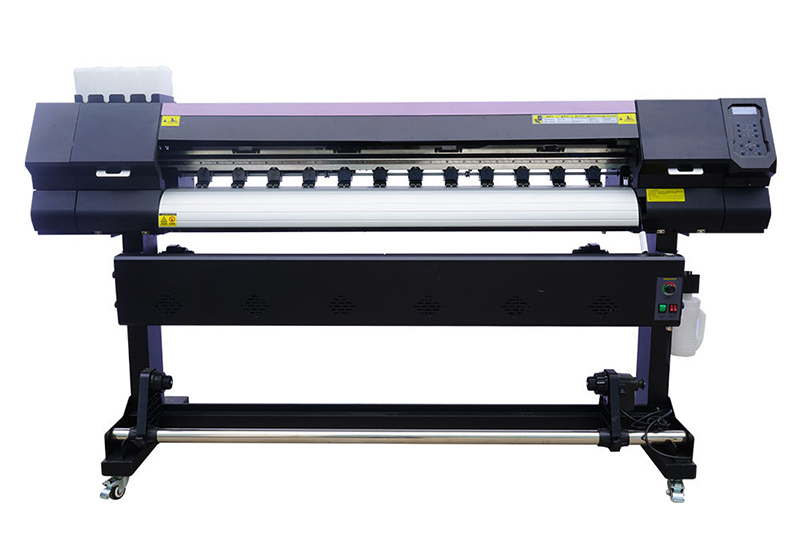The working principle of a digital sublimation printer involves several steps to transfer sublimation inks onto a substrate, typically fabric. Here's a breakdown of the working principle:

1. Image Preparation: The printing process starts with preparing the desired image or design on a computer using graphic design software. The image is typically created or edited with the specific dimensions and color profile required for sublimation printing.
2. Printing: The prepared image is sent to the digital sublimation printer for printing. The printer uses inkjet technology to deposit sublimation inks onto a specially coated transfer paper. The inks are formulated with dyes that can sublimate from a solid to a gas state under heat and pressure.
3. Transfer Paper Setup: Once the image is printed, the transfer paper is carefully aligned and positioned on top of the fabric substrate. The printed side of the transfer paper faces downward, in direct contact with the fabric.
4. Heat Press Application: The fabric and transfer paper are placed between the heated platen of a heat press machine. The heat press machine applies heat and pressure to the transfer paper and fabric, activating the sublimation process.
5. Sublimation Process: As the heat press machine applies heat, the sublimation inks on the transfer paper start to sublimate. The sublimated inks turn into a gas without going through a liquid phase. The gas molecules penetrate the fabric's fibers and become embedded within them.
6. Cooling and Solidification: After the sublimation process, the heat press machine is opened, and the fabric and transfer paper are separated. The sublimated inks, now in a gas-solid state, cool and solidify within the fabric's fibers. This creates a permanent, vibrant, and durable print that will not crack, fade, or wash out easily.
7. Finishing Touches: Once the fabric has cooled down, any excess transfer paper is trimmed or removed, leaving behind the printed design on the fabric. The fabric can then be further processed, such as cutting and sewing, to create finished products like apparel, home textiles, and promotional items.
It's important to note that the success of the sublimation printing process depends on various factors, including the quality of the sublimation inks, the appropriate heat and pressure settings, the compatibility between the transfer paper and fabric, and the accuracy of color management during image preparation. Proper calibration, testing, and adherence to manufacturer guidelines are crucial for achieving optimal results with a digital sublimation printer.
kenteer has launched digital sublimation printer for customers . If you have any needs, you can contact us for a quote.
